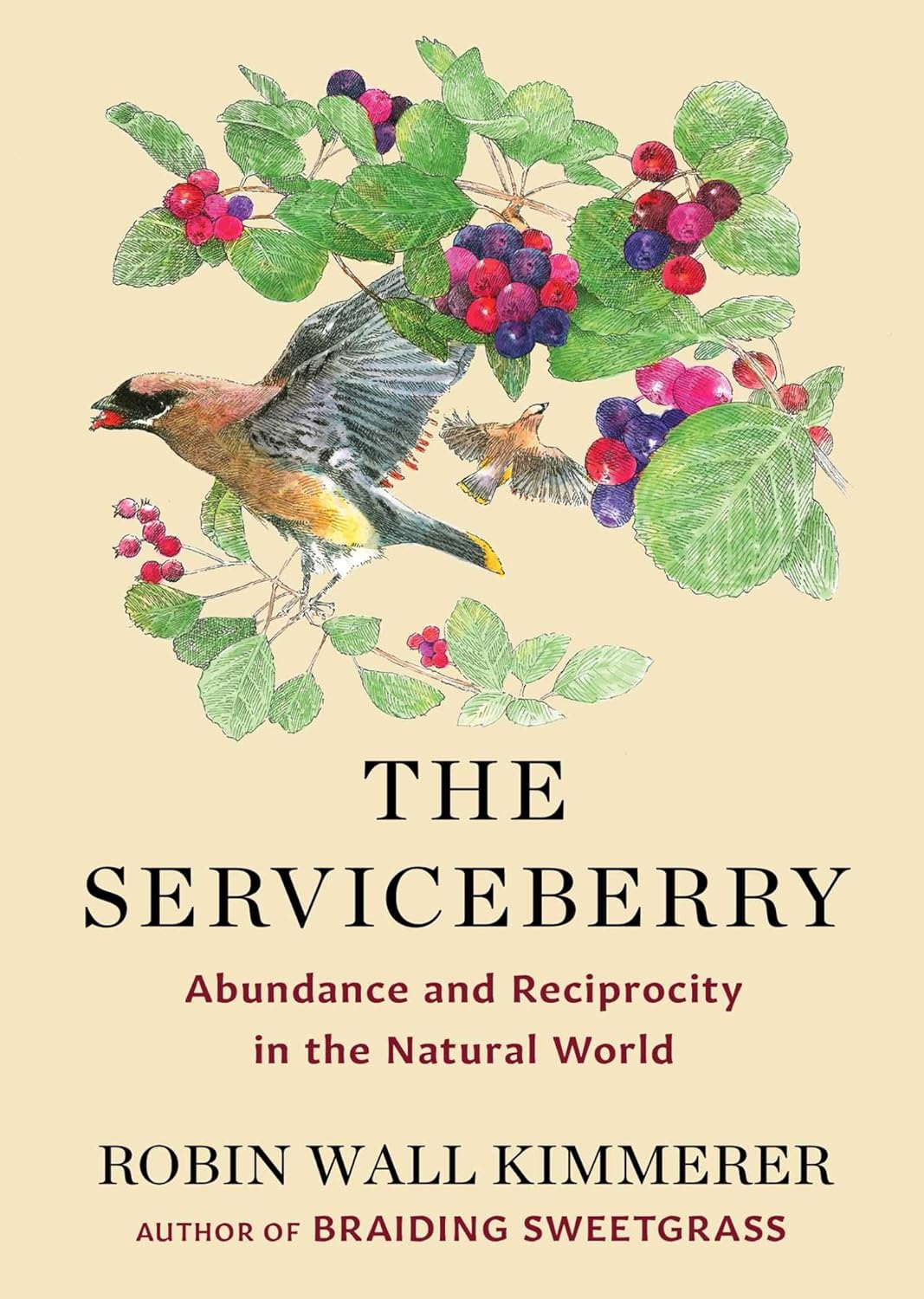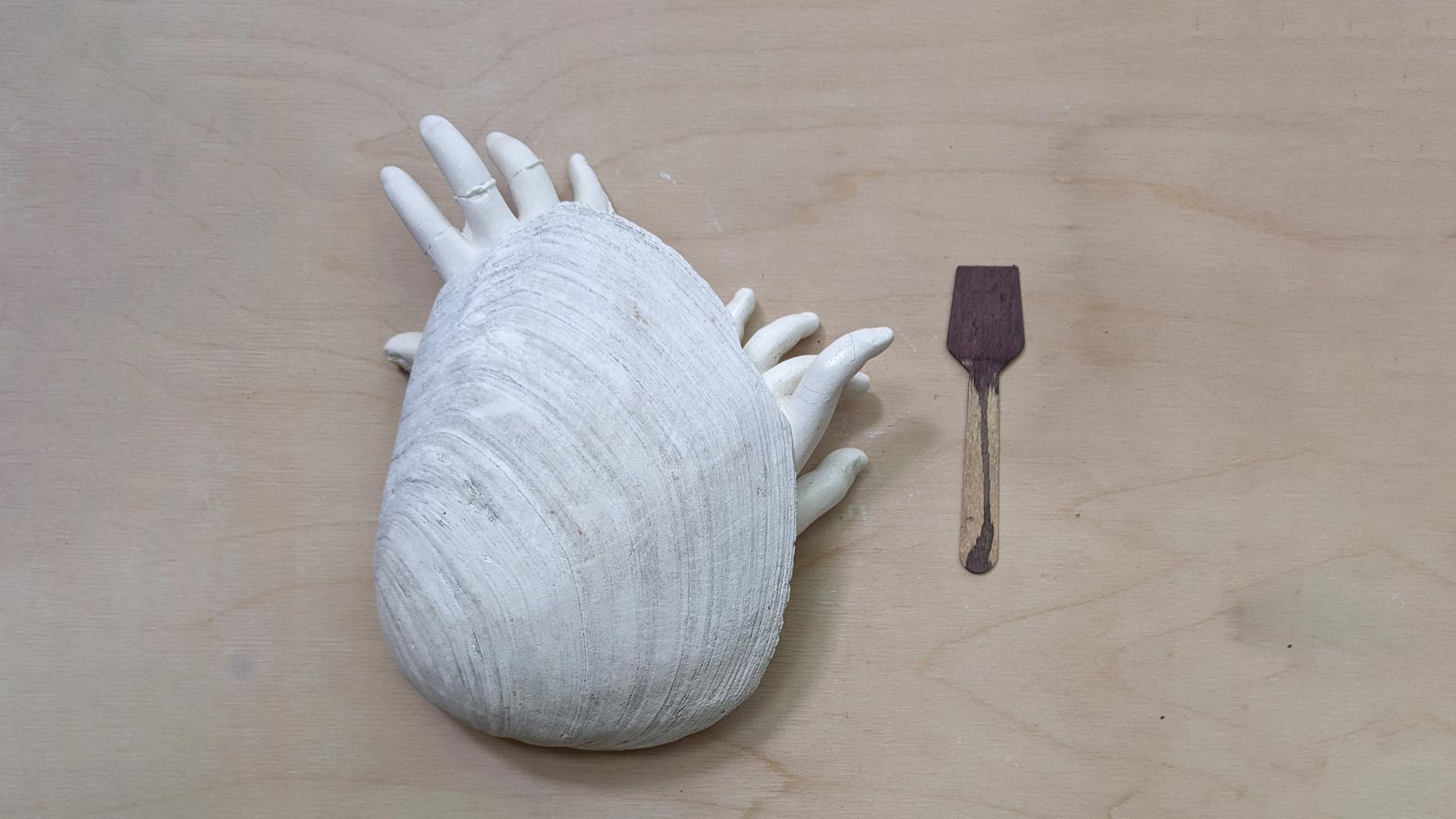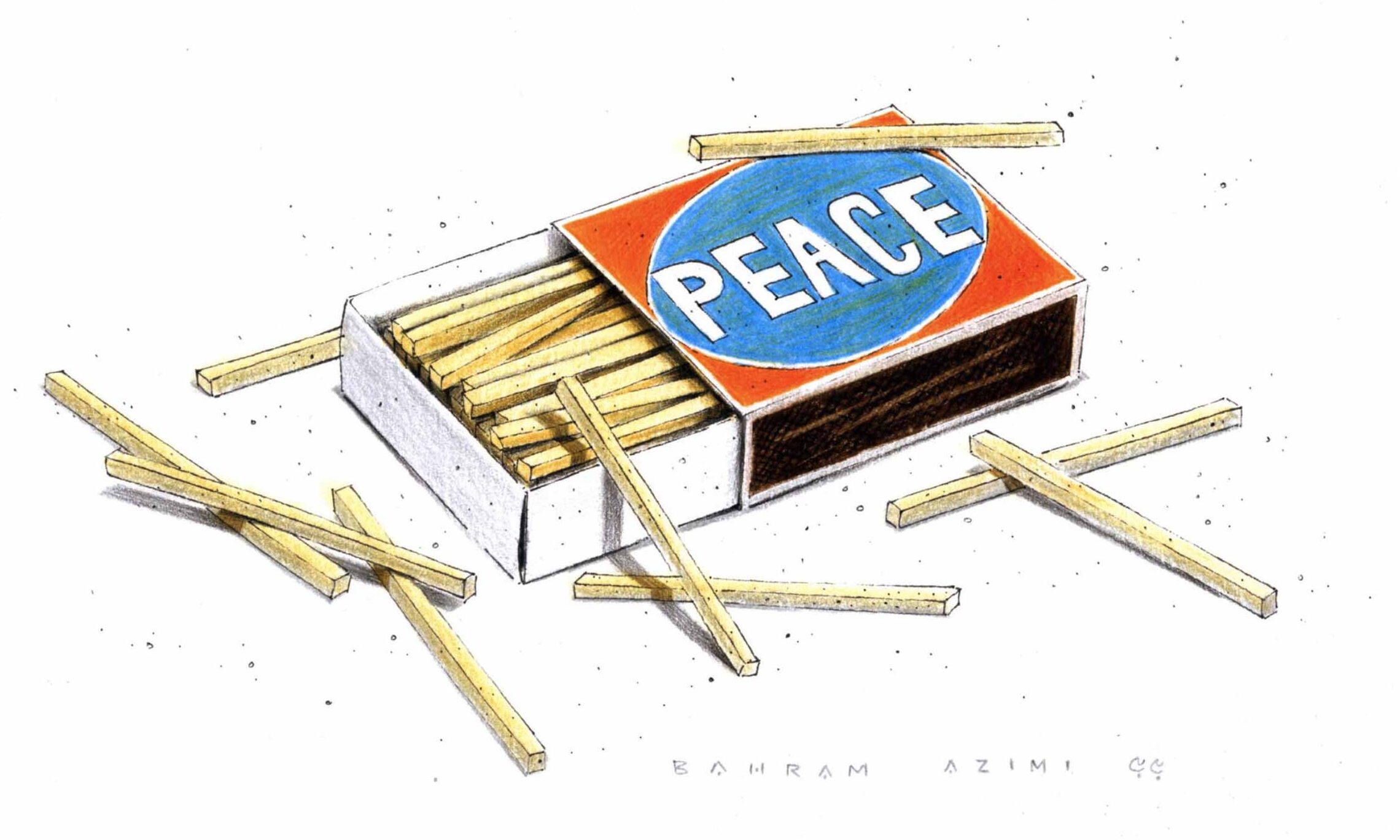
Indigenous activist and botanist Robin Wall Kimmerer showcases the serviceberry tree or bush as a model for the return to a more generous society based on reciprocity rather than on the creation of artificial scarcity and competition. The serviceberry, Amelanchier arborea, variously known as saskatoon, juneberry, shadbush, shadblow, sugarplum, sarvis, and so forth, plays a pivotal role in many traditional economies. This berry is also crucial to the survival of various species of birds and other critters that depend on it for calories in times of environmental stress. It plays an essential role in the life cycles of the plants, animals and other living things that surround it.
As a registered member of the Citizen Potawatomi Nation, Robin—a name she cherishes when watching her namesakes chirping away—has personal experience of how Indigenous societies measure status, “not by how much one accumulates, but by how much one gives away.” The currency in what she calls the gift economy is relationship expressed as gratitude, as interdependence and the ongoing cycles of reciprocity.
The currency in what she calls the gift economy is relationship expressed as gratitude, as interdependence and the ongoing cycles of reciprocity.
These values, as expressed in the Pacific Northwest potlatch ceremony, were deliberately repressed by European invaders; colonial governments, with the blessing of missionaries, banned them. Their rationale was that exchanging gifts was contrary to the “civilized values of accumulation.” Sadly, “questions of land as a moral responsibility and land as a commodity” are sometimes contested, as when Donald Trump (during his first term) reversed a decision to protect the cultural landscape of the Bears Ears National Monument, a sacred place for multiple Indigenous nations, in order to give access to a private uranium-mining company. As usual, extractive economies disrupt nature’s rhythms.
Kimmerer explains that she was surprised to learn that modern economic theory assumes we will each behave in conformity to Adam Smith’s “rational economic man,” whose behaviour is governed by greed and self-interest. However, she makes a case for nurturing a different economics based on reclaiming “ourselves as neighbors with shared investment in mutual well-being.” She is also confident that it can be achieved.
We can all share her faith and enthusiasm, provided we disregard the reality of capitalism, especially today’s rampant version. Capitalism, by definition and action, is a pyramid scheme. How can this pyramid be toppled? Common sense, good will and an understanding of nature’s circularity are not enough. Perhaps one day people might wake up and look at the depredations around them and realize that what is not returned freely sometimes has to be consciously taken back.
Regardless of the lessons learned in this beautifully written and illustrated book, a leisurely read by a fragrant serviceberry bush will be a gift for you.







